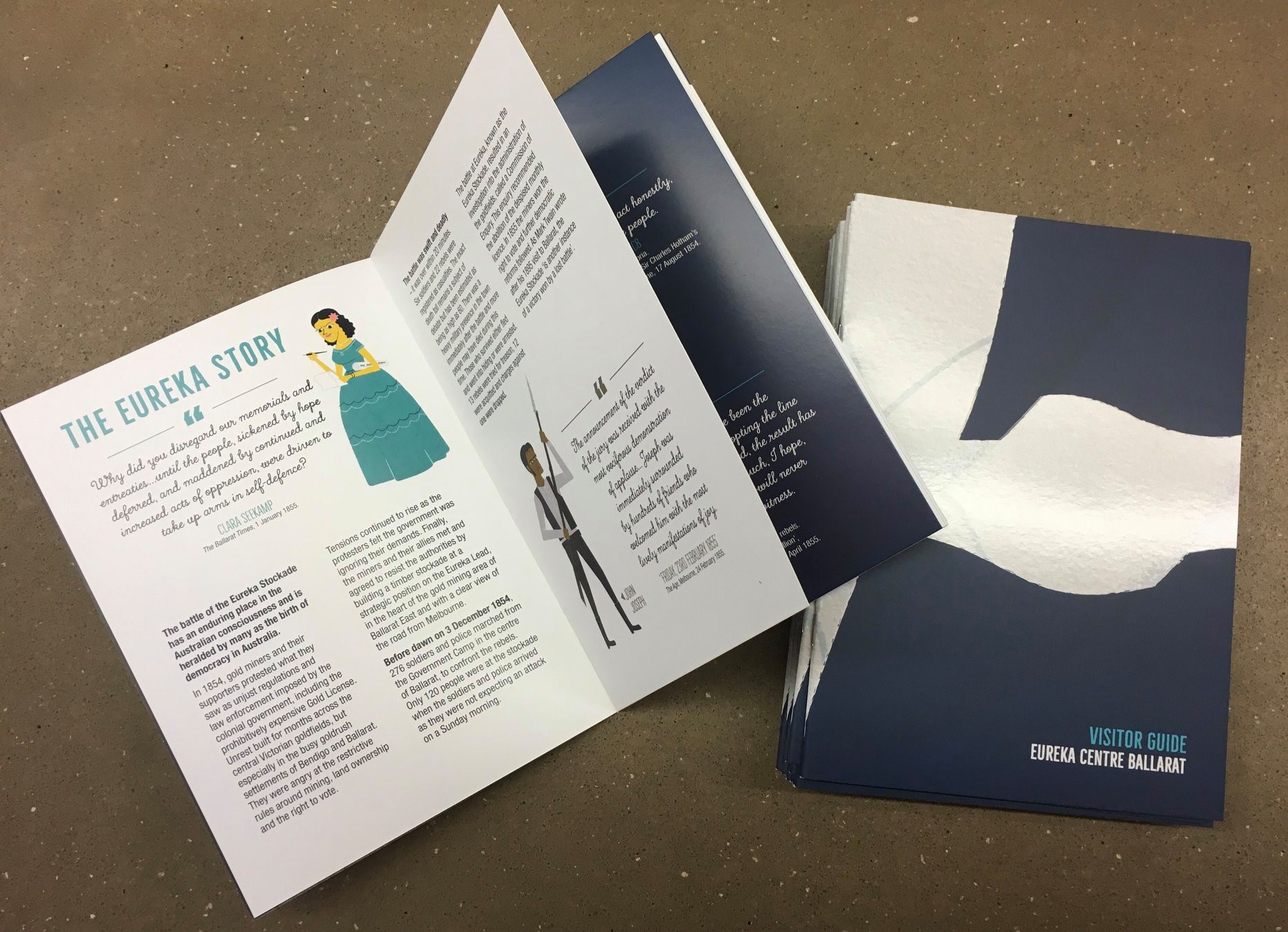Start typing to search
You can also hit “Enter” on your keyboard to submit your query.
0What's on
0Everything Else
The Eureka flag
The Eureka Centre Ballarat is home to the Eureka flag, on loan from the Art Gallery of Ballarat.
The flag was known to the Eureka rebels as the Australian flag, though it is recorded in the gallery’s collection as the ‘Flag of the Southern Cross’.
It was first raised at a Ballarat Reform League meeting on the 29 November 1854 at Bakery Hill and then at the Eureka Stockade.
The flag’s design features a white cross with four stars on a blue background, inspired by the Southern Cross constellation.
The history of the design and making of the Eureka Flag is a source of passionate debate.
Evidence points to the flag being designed by Canadian miner and Eureka rebel, Henry Ross.
A popular view, supported by oral histories, is that it was sewn by three women – Anne Duke, Anastasia Hayes and Anastasia Withers.
There is another theory that it was made by professional tentmakers.
It is believed that police trooper John King souvenired the flag following the attack on the Eureka Stockade.
In the 1890s, King’s family loaned the flag to the Art Gallery of Ballarat and his descendants donated it in 2001.
The flag measures 2.6 metres in height and 4 metres in width. It is made of cotton and wool.
The flag has missing sections that were cut off and given as souvenirs. Occasionally, these fragments reappear, and many are held in museum collections.
In 1973, the Art Gallery of Ballarat received a grant to repair and display the Eureka Flag. Ballarat seamstress Val D’Angri led the conservation effort.
Prime Minister Gough Whitlam unveiled the flag on 3 December 1973. He used the launch as an opportunity to position the Eureka story as central to Australia’s national identity.
In 2011, the flag was assessed and treated for a second time in accordance with contemporary conservation standards.
The flag was then installed in a purpose-built case at the Eureka Centre.
The appropriation of the Eureka Flag by groups representing divergent ideologies has a long history.
The flag has a strong association with the trade union movement, but in recent times has been adopted as an expression of political, subcultural or personal identity by many individuals and groups.
The different ways in which the flag has been embraced is a reminder of Eureka’s enduring resonance.
Source: Eureka Centre Ballarat
Main image: Paul Lambeth

Eureka Centre Ballarat Visitor Guide
Explore the social history and cultural impact of the Victorian gold rush and honour the stories of the men and women who risked their lives in the fight for miners’ rights
